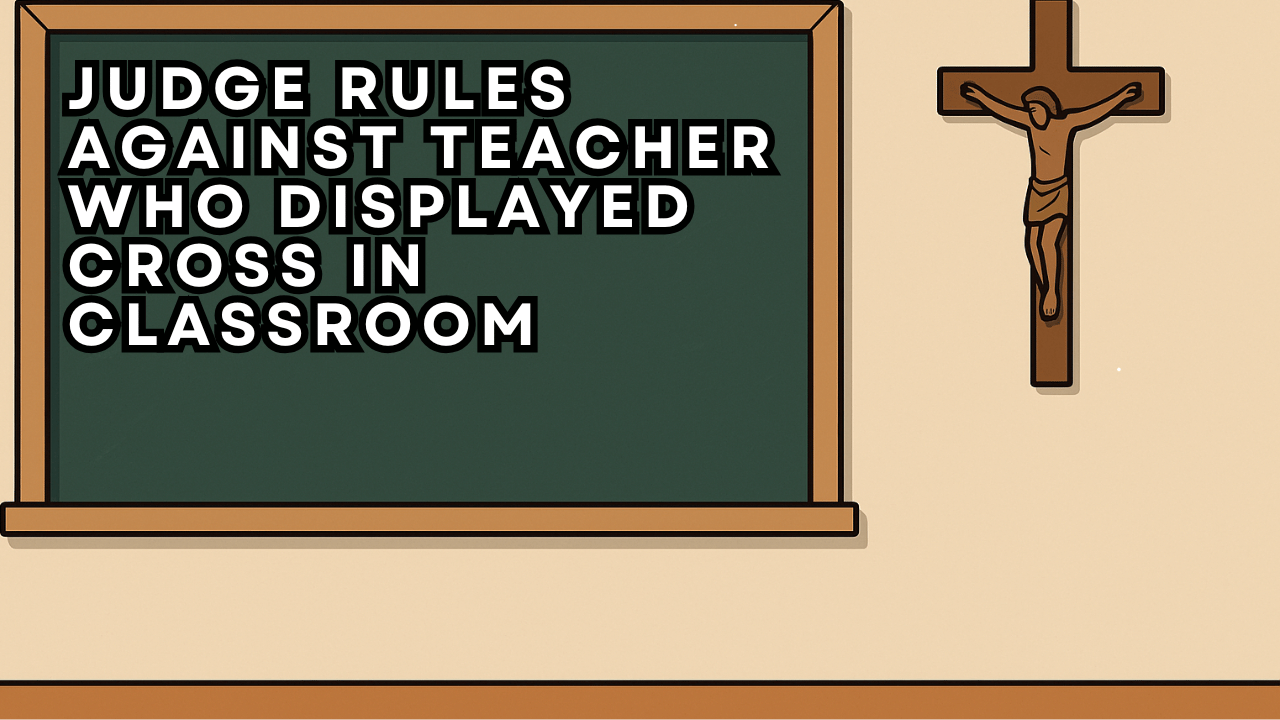A federal judge has ruled against New Britain, Connecticut teacher Marisol Arroyo-Castro in a case involving a crucifix displayed in her classroom, determining that the teacher’s placement of religious items violated constitutional principles regarding the separation of church and state in public schools.
According to the court’s decision, Castro “acted pursuant to her official duties when she posted items on the classroom wall that students would see during instructional time.“ This determination became central to the judge’s reasoning that the display of religious symbols in a public school classroom constitutes government endorsement of religion, which is prohibited under the Establishment Clause of the First Amendment.
The ruling marks a significant moment in ongoing debates about religious expression in public educational settings. Castro was placed on administrative leave following her refusal to remove the crucifix from her classroom, sparking discussions about the boundaries between personal religious beliefs and professional responsibilities in public institutions.
Teacher’s Response to the Decision
Castro expressed her disappointment with the outcome, stating that “I am extremely disappointed with the decision by the court.” Her response reflects the emotional toll of the legal proceedings and her conviction regarding her right to display religious symbols in her workspace.
The case has drawn attention from various stakeholders in the education and religious freedom communities, with supporters of Castro arguing that the ruling restricts personal religious expression, while others contend that it appropriately maintains secular standards in public schools.
Legal Arguments and Supreme Court Precedent
Castro’s legal team challenged the ruling on constitutional grounds. Her lawyer argued that “Today’s decision flies in the face of clear Supreme Court precedent,” suggesting that the judge’s interpretation contradicts established legal standards regarding religious expression.
This assertion points to ongoing tensions in First Amendment jurisprudence, where courts must balance the free exercise of religion against the government’s obligation to remain neutral on religious matters. The Supreme Court has issued numerous decisions attempting to clarify these boundaries, though interpretations continue to evolve and generate controversy.
Investigation Findings
The school district’s investigation into Castro’s conduct revealed additional concerns beyond the physical display of the crucifix. An investigation found Castro made religious comments to students during instructional time, which the district viewed as further evidence of religious proselytization in the classroom environment.
These findings formed part of the basis for the administrative action taken against Castro and contributed to the court’s analysis of whether her conduct crossed the line from personal religious belief to official endorsement of religion by a public school employee.
Broader Context in Education Law
The case reflects broader national conversations about the role of religion in public schools. While some argue that removing religious symbols and restricting religious speech infringes on individual rights, others maintain that public schools must remain secular spaces where no particular religious viewpoint receives institutional support or promotion.
Federal courts have consistently held that public school employees, while retaining their personal religious rights, cannot use their official positions to advance religious messages to students. The distinction between private religious expression and official endorsement remains a critical legal principle in education law.
Castro’s case joins a growing body of litigation examining the intersection of religious freedom and public education, with implications for how schools balance competing constitutional interests and community values.

